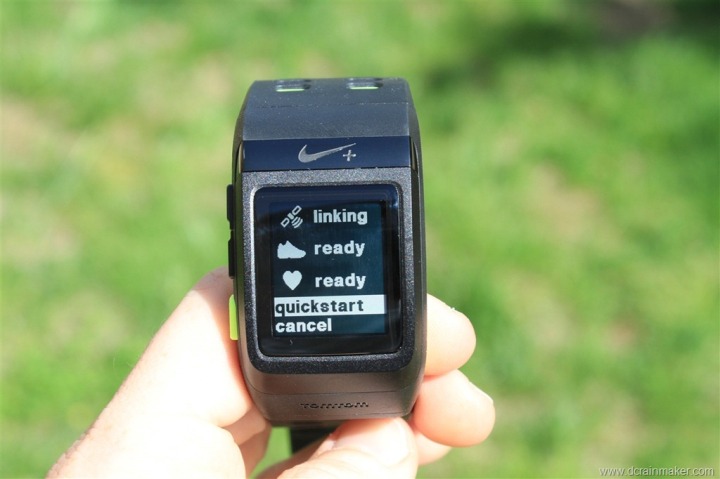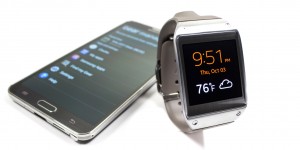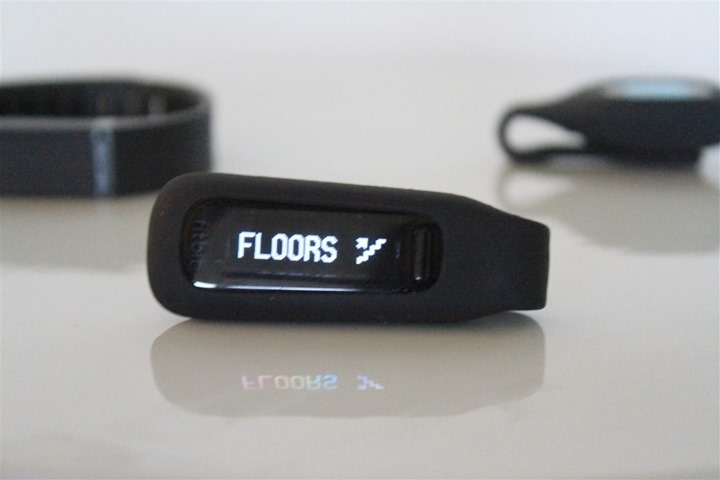I like to run outside. I used to hate it. Well, as far as that goes... I used to hate running at all. Once I started running, I thought maybe I liked treadmills better. Then, I ran outside for a 5k and that was a lot worse than a 5k on a treadmill with a 0% incline. Yes, I realize that's common knowledge, but it was worse than I expected...granted it was much colder than it had been in the days/weeks prior to the race and then I signed up for it not anticipating a weather change, not that you can trust a weather report ever in Michigan, let alone a week out from the day of a race. Anyway, 2 years later, I have figured out some of the ins and outs of what works for running outside. That being said, there are still days when running indoors is necessary due to weather, schedule and things like that. It certainly beats no run at all and sometimes you just don't have the time to gear up, get where you want to run, or deal with traffic. I can run in my neighborhood, but the areas I prefer around there for safety (both traffic and personal safety) limit the route a little as far as long runs go. I hate dealing with drivers for both safety and timing reasons anyway. The jogging in place to cross the road isn't my cup of tea. I'd rather hit the trail north of town where it's wide, nicely paved, and while well-used enough for safety, it provides some bit of solitude and always has beautiful scenery to enjoy along the way.
But sometimes you just can't and for that you're stuck with home or a gym and if we're talking about bad weather....it's an easy excuse to not want to go out at all and battle that to not go to the gym. I'm also not big into working out around others a whole lot and I get annoyed seeing people showing off or doing things incorrectly (though I am sure I have my host of incorrect techniques on anything too, but the blatent ones just cause me to grumble).
So here's my journey to a home gym. Last winter an old coworker pointed out a deal on a smartboard projector, like a REALLY good deal. It was an $800 projector refurbed and then had a deal of the day on top of that to make it $200. The 2 markers included alone are worth that. It's a short throw and has a pretty good resolution, though not technically HD and the inputs are somewhat limited. Primarily you're looking at VGA and the basic RCA connectors. Still, it was a decent deal and it's not my primary entertainment viewing, so why not. I had other house projects to do and the summer consumed my time on those. Fall came and I battled leaves for at least 6 weeks (maybe I'll post one day about that too), and finally the cold weather began to set in. It got me to thinking I should do something about my running for winter. I wanted to continue the outdoor runs, but to be more consistent and possibly properly (I've done it improperly once already) for a marathon, that I need to have a way to train very consistently and get my mileage where I need it. Additionally the Xbox One was coming out and then I managed to snag one, so I could also move the old Xbox upstairs to my guest room. I played around with layouts on a free app I installed on my Kindle. In the end, I decided not to cram as much into the room as I thought I might at first, because it would've been too much. Here's what I ended up with.
I started out calculating what size roughly I'd be working with on the short throw projector. I realized quickly that that size of markerboard would be ridiculously expensive, so I sought out other options. I went with some shiny type tile board from Home Depot. For a 4' x 8' sheet, it was less than $13 and it worked great. I had them cut it in store to roughly the size I'd need (which was just barely what would fit in my car too. By barely, I mean I scuffed up the edges and bowed it a bit getting it in the car, but it was pretty salvagable. Then, I had the issue of how to mount it. At first I tried raising the back side out with some scrap pieces I cut from the remainder and then using a wall holder thing that sits on a piece you attach to the wall. Getting that perfect depth to make it even everywhere wasn't working and I knew I'd have bowing with any pressure trying to write on it. Additionally the scrap piece stacking wasn't working to catch the board without coming through the front side at all. I want to say it's only 1/16" or so thick. It's not much to grab and certainly if you do, you're seeing the screw come through. I ended up deciding screwing through it to the wall was the only way, but that presented the problem of how to put a border on it since I wanted that covered up.
I started out calculating what size roughly I'd be working with on the short throw projector. I realized quickly that that size of markerboard would be ridiculously expensive, so I sought out other options. I went with some shiny type tile board from Home Depot. For a 4' x 8' sheet, it was less than $13 and it worked great. I had them cut it in store to roughly the size I'd need (which was just barely what would fit in my car too. By barely, I mean I scuffed up the edges and bowed it a bit getting it in the car, but it was pretty salvagable. Then, I had the issue of how to mount it. At first I tried raising the back side out with some scrap pieces I cut from the remainder and then using a wall holder thing that sits on a piece you attach to the wall. Getting that perfect depth to make it even everywhere wasn't working and I knew I'd have bowing with any pressure trying to write on it. Additionally the scrap piece stacking wasn't working to catch the board without coming through the front side at all. I want to say it's only 1/16" or so thick. It's not much to grab and certainly if you do, you're seeing the screw come through. I ended up deciding screwing through it to the wall was the only way, but that presented the problem of how to put a border on it since I wanted that covered up.
Here's the projector and tile board installed without any frame/border or cable management:
I found some storm door/window type 2 piece spline type things at Lowe's. I mounted the screws through the holes on the under piece of those through the whiteboard, and then I used a rubber mallet to snap the top pieces in place. Worth noting is that originally I was not going to do miter cuts on those and it would've been tacky. I also would've run into the fact that I couldn't center the pices to cover the screw holes on the side that way. I decided miter cuts were necessary and I'm much happier with the results. The only thing that was bad was the materials for this (I needed 4 top and 4 bottom pieces I believe) were more expensive than I would prefer. It was about $31 for the moulding and screws, which is ridiculous, but not nearly as ridiculous as the cost of "flat tv conduit" etc. that wouldve cost $100-200 probably for the length I'd need since I can't run it behind the whiteboard without causing bowing.
For the cables, I used 1 1/2" pipe support clips as the raceway and it's a bit industrial but better than going through the external wall with blown in insulation to fish the cable and also if I need to upgrade and can utilize other connections later, it's much simpler. Besides, this is a workout room...NOT my living room!
Then, I found a treadmill on Amazon as an Open Box item. To be honest, the only thing open box about it was some of the scuffs and scraps in the external box from shipping, but with something that heavy it's no surprise. Internally, the contents were well protected and packed with foam, so nothing was harmed by shipment. On top of that, I can not tell that the thing was ever assembled. There weren't the little scrapes you'd get in metal or plastic where you screwed things down anywhere. I am certain it was never assembled before. So getting a treadmill with decent reviews (including that it has enough horse power and quality for actual running and not walking) from Treadmill Doctor, for less than $1000 is a good deal. Most sub $1000 they don't ever recommend for running. With this being Open Box, I got it for $860, shipped, from Amazon.
The next hurdle was getting it upstairs after I got it. I had contacted a Craigslister about helping me haul it, but the price he quoted was EXACTLY the same as he had quoted to move one from someone else's house to mine (dismantling/re-assembling) and upstairs. This one, already at my house, to haul it upstairs, assemble, and haul away the packaging...he ended up at the same total. Needless to say, I was a bit not thrilled, but I didn't have anyone to help me, so I was going to cough up the $70. Then, he became unavailable for an entire week from the time he said he'd be. I didn't want to wait, so I began to unbox it myself and hauled up the small parts. The instructions for assembly were simple enough and the way the tall part of the frame and the tread deck would need to remain assembled because of the electrical, meant I wouldn't need anyone holding parts when I screwed things together like I had feared originally. I posted a call for help on a local neighborhood Facebook group and a neighbor and his 2 sons were willing to come help that night for the $40 I offered ($30 less than the installed full service from the Craigslist guy and I'm someone else offered to help for free and this guy and his sons probably would've too, but I was happy to have their help and knew they had had a rough year with a fire and pet getting hit by a car with some steep medical bills so I was more than happy to pay them the $40).
Once I got it moved upstairs, I got it assembled and was able to run the next day. I saw that the Virtual Active videos on vafitness.com had a Cyber Monday coupon available and that knocked 15% off the price, so I bought 2 packs of videos. The treadmills at my work have VA built in and I love it. The videos I got won't control incline automatically, but I have a much bigger screen and I don't mind the lack of incline anyway since I'd rather up that when I do some walking intervals to drink water or catch my breath a bit.
All in all, it's a great set up:
- Old Xbox: free
- Refurb'd Smartboard projector $199
- 1 1/2" pipe clips about $5
- Tile Board about $13
- Storm door type moulding and screws about $31
- LifeSpan TR1200i treadmill (open box item) $860
- Virtual Active running videos (2 hd running packs) about $85
- Treadmill mat about $27
Total $1220 <--- not bad for everything I've got in this set up!
Here it is. Not too shabby, right? And yes, I did it all myself...aside from the help getting the tredmill upstairs! :)












